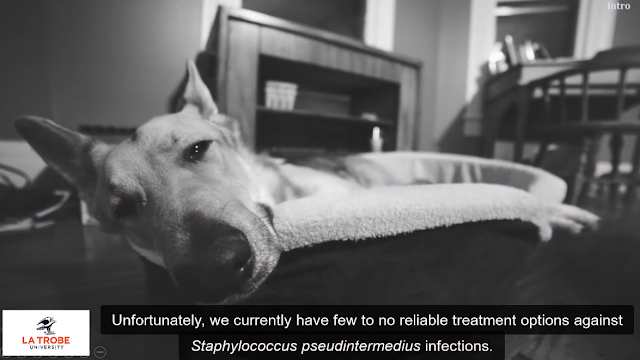 |
| Still image from Stephanie Lynch's 2020 VYT entry "Bacteriophages as a treatment option against canine pyoderma". |
People say that research isn’t finished until it's communicated, so how can we best communicate our research?
While the idea of sharing your research may seem just as challenging as tackling the research itself, sharing your work can be enjoyable! Not to mention communicating your research has the potential to be hugely beneficial to you, your discipline, and the wider community. After all, what is the point of researching if no one is going to be privy to your findings and ideas?
A plethora of different avenues can be used to share your research both in and beyond academia so it can be difficult to know where to start to get your work out there.
In Part 1 of this 2-part blog series, we give you some ideas to consider that may help you to share your research in a clear, engaging and accessible manner. While the tips below were written specifically for the Visualise Your Thesis (VYT) competition, they are applicable to many other instances of research communication.
 |
| Still from Nicole Pavich's 2020 VYT entry "Environment, Ethics & Aesthetics: Film’s Role in Framing a Sustainable Fashion Future." |
Effectively communicating your research
You have probably all heard of an elevator pitch for your research. The notion of a short, yet informative spiel to spark interest to the intended audience about your research project. As the Visualise Your Thesis (VYT) competition requires only a 1-minute video - it is essential to distil your research to the point!
- Introduce your research question/problem. Then unpack how your project is addressing this question/problem (methods) and the outcomes that arise from your work (either results or future directions).
- Identify the MAIN point you want the audience to take away from your video and find a way to emphasise this in your video. Your main point could be a new treatment you are developing or a historical book you are transcribing. Whatever it may be, make this the centre of your talk, then evolve the story around it, including background information and methods!
- Put your research into context! Finish up your research script by making a clear statement as to how your research fits into the field, the bigger picture or the intended impact of your work. For example, your new treatment may cure skin infections in dogs, or the transcribed book may deepen our understanding of ancient history.
- Lastly, head along to the RED team's sessions about communicating your research (e.g. the "Sharing your story: the how and why of communicating about your research" workshop)!
- Narrative Conventions – Narrative conventions could be used to guide the viewer through your VYT entry and engage them in your research. Some examples of classical narrative conventions include: a disruption, protagonist, exposition, enigma, climax, conclusion, etc.
- Narrative Structure – Adopting a narrative structure may help you to organise your research material into a story. For example, your VYT entry could feature a three-act linear narrative with a beginning, middle and end – or even a circular narrative that sees your entry finish where it started.
- Visual perception:
- Font - Arial font at a font size 14 or above would work well for your VYT, as Arial is said to be the most accessible font! However, font to background colour is equally important, head to http://colorsafe.co/ for colour guides and palettes.
- Images - Large, clear and labelled images will be most accessible - take a few steps away from your screen to check image visibility. Also think whether the image adds to the words you are saying or distracts the audience.
- Captions – Visual captions should be used to assist the message you are communicating through audio. Captions are essential for those that rely on other senses and will enhance the accessibility of your message. Check out La Trobe’s guide on creating captions here.
- Removing the jargon: Deliver your message in ‘lay’ terms by removing jargon - try https://splasho.com/upgoer5/ to explain your research only using the top 1000 most used English words. In doing this, you will be distilling your research and also allowing it to be accessible to the general public.
 |
| Still image from Stephanie Lynch's 2020 VYT entry. |
 |
| Still image from Nicole Pavich's 2020 VYT entry. |




Comments